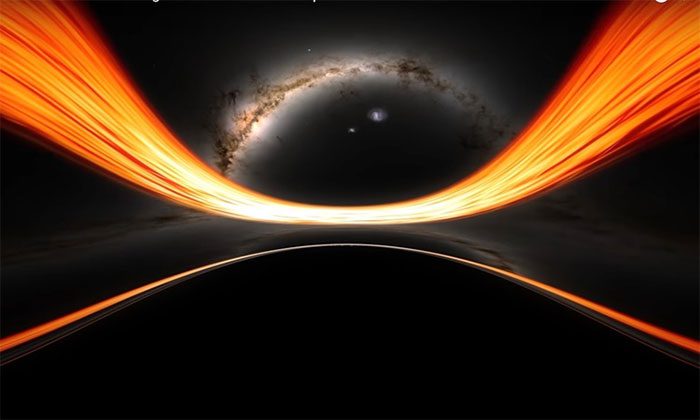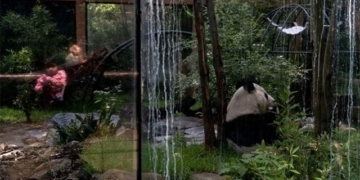NASA’s New Graphics Depict What Happens When Falling Into a Supermassive Black Hole like the One at the Center of the Milky Way.
The process of falling through a black hole. (Graphics: NASA).
Researchers created a simulation using the Discover supercomputer at NASA’s Climate Simulation Center. The video captures the perspective of falling straight through the accretion disk of glowing gas surrounding a supermassive black hole, similar to the one at the center of the Milky Way. The view changes during the fall, gliding past particles of light speeding around the black hole, eventually reaching the point of no return, known as the event horizon, where even light cannot escape, as reported by Live Science on May 7.
Black holes are the densest objects in the universe. No one knows exactly what matter looks like beyond the event horizon of a black hole, but researchers understand much about the physical properties surrounding these super-dense points in space. Around a black hole, the gravitational force is so strong that the space-time continuum is warped. Objects near it can reach speeds close to that of light. At such speeds, time appears to slow down; for example, an astronaut orbiting a black hole for 6 hours would age 36 minutes less than a colleague on a parent spacecraft, according to NASA.

Objects approaching a stellar-mass black hole are often torn apart before reaching the event horizon.
The most common black holes in the universe are stellar-mass black holes. They have small event horizons and varying gravitational forces over short distances, creating intense tidal forces around them. Objects that get too close to a stellar-mass black hole are often torn apart before reaching the event horizon in a process known as the spaghettification effect. One can imagine that if falling straight down, the gravitational force acting on your feet would be stronger than on your head, stretching your body like spaghetti.
In the new simulation, astrophysicist Jeremy Schnittman at NASA’s Goddard Space Flight Center models what happens if someone gets too close to a supermassive black hole. Due to their immense size, supermassive black holes resemble vast, calm seas compared to stellar-mass black holes. You would still experience the spaghettification effect if you fell into one, but first, you would fall through the event horizon.
The black hole at the center of the Milky Way has been photographed by the Event Horizon Telescope. In the images, it appears as a glowing gas ring, known as the accretion disk, swirling around a pitch-black void. In the new simulation, the observer falls through this accretion disk. As they approach the event horizon, the sky narrows, and the dark void begins to close in.
Extreme gravitational forces would destroy the observer just 12.8 seconds after passing through the event horizon. A few microseconds later, the matter compressed to extreme limits reaches the singularity, the center of the black hole. This journey spans 128,000 kilometers from the event horizon to the singularity, but it occurs in the blink of an eye.


















































